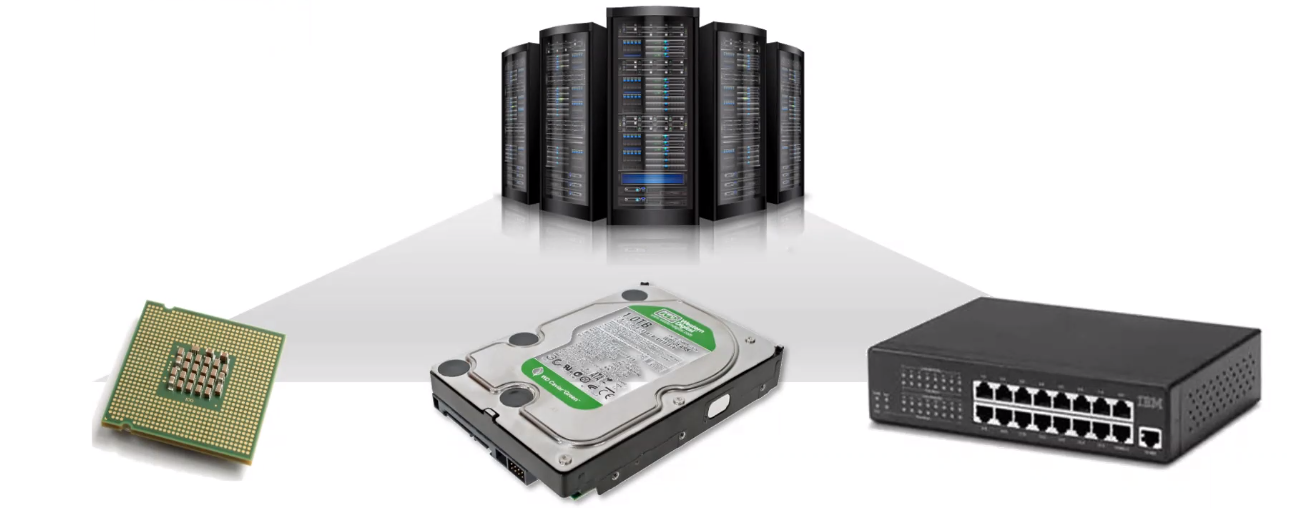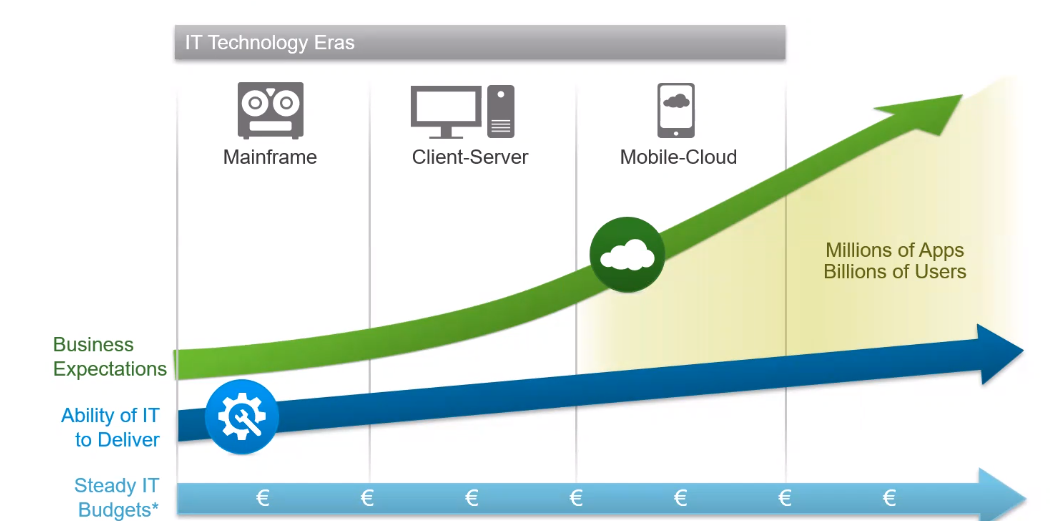Next-generation data center

More and more technologies are growing and new methods are being created to exploit resources to the maximum. In the case of data centers, they have undergone a very large transformation in recent years, and this has led us to cloud computing.
Yesterday's data center
In data centers a few years ago we found that for a server we only had one operating system and only one service was running. The trouble with it is that not all resources were used and many were wasted. From the fact of wanting to take advantage of the maximum possible resources, virtualization was born, which tries to be many operating systems running with many services on a server.
Deconstruction of a data center
A data center is made up of three ingredients: computing, storage, and networking. What really puts these three ingredients to use is the software, which gives it intelligence and enables the development of virtualizations.
Today's Data Centers (Yesterday)
The data centers of today, we can consider them from yesterday, since these types of data centers are only seen in companies that are not up to date. They consist of removing the storage disks from the servers, placing them in storage cabinets and hosting them in a SAN (Storage Area Network) storage.
In the previous photo we can see the different waves that computing has had. In the beginning, we talked about Mainframe systems about the 60s - 70s. A Mainframe system is about a huge or large central computer, which is capable of carrying out millions of instructions per second. Then, around the 90s, the client-server model came out, which is a software design model in which tasks are divided between the providers of resources or services, called servers, and the applicants, called clients. Finally, right now we are in the mobile-cloud system, which allows multi-device and multi-connection.
What you want to achieve with the Cloud and virtualization is that companies consume technology as a service. Virtualization separates the software from the hardware, puts a layer between the operating system and the hardware called virtualization software, where virtual machines run with their operating system. We went from a physical server with one operating system to a physical server with several operating systems. But then we can move on to separating the server drives in a storage array to further optimize space and efficiency.
Data center replica
By making use of virtual machines, it allows us to replicate the data center in a simpler and much faster way. Companies often have their data center replicated to avoid losing information. The two data centers are constantly being updated. If one fails, there is a backup on the other and only that both of them fall at the same time could bring catastrophe, a fact that is almost impossible due to the security that these data centers have. There are technologies that allow updating only the data that has been modified, this allows to decongest the link between both data centers and increase the update speed.
VMware Features
The world-renowned company VMware provides virtualization software. VMware offers the following features, among many:
- vMotion Storage: vMotion is a technology that enables the “hot” migration of a virtual machine from one host to another, without an appreciable impact on the end user.
- vSphere: VMware vSphere is the industry's leading virtualization platform for building cloud infrastructures. It enables users to run business-critical applications with confidence and respond more quickly to business needs.
- vCompute: DRS dynamically allocates IT resources to higher priority applications, DPM consolidates workloads to fewer servers when the cluster requires fewer resources: puts unnecessary servers on standby, and brings servers back online as they grow workload needs Minimizes power consumption while ensuring service levels.
- vStorage - The virtual machine disks consume only the amount of physical memory that they are using. Reduces storage cost by up to 50%.
- vNetwork - Refers to the technologies that VMware vSphere uses to integrate input / output and networking functions on an ESX / ESXi host.
Hyperconvergence
Previously we have seen the data centers of today, where we emphasized that they really were those of yesterday, because the reality is that there is another type of infrastructure that gives better results. Hyperconvergence is a software-defined infrastructure that separates the infrastructure operations from the system hardware and converges them at the hypervisor level into a single (and therefore hyperconverged) block.
Hyperconverged systems leverage software-defined intelligence to break down processing and storage silos, and allow them to run and manage on the same server platform, eliminating inefficiencies and speeding up processing.
Authors: Oriol Lalaguna & Jan Fité





Comments
Submitted by ¸ÔƢ°ËÁő (not verified) on Mon, 08/09/2021 - 17:34 Permalink
Why people still make use of to read news papers when in this technological
globe the whole thing is presented on web?
Submitted by ¸ÔƢ°ËÁőž÷Ăź (not verified) on Fri, 08/20/2021 - 02:13 Permalink
I have read several excellent stuff here. Certainly price bookmarking for revisiting.
I surprise how much attempt you set to make this sort of wonderful informative site.
Submitted by ¸ÔƢ (not verified) on Sat, 08/21/2021 - 11:33 Permalink
I'm gone to tell my little brother, that he should also
go to see this blog on regular basis to get updated from most recent news.
Submitted by ¸ÔƢ (not verified) on Sat, 08/21/2021 - 12:20 Permalink
Great blog you have here but I was curious about if you knew of any message boards that cover the same topics talked about
in this article? I'd really love to be a part of online community where I can get feed-back from other experienced people that share the same interest.
If you have any recommendations, please let me know. Kudos!
Submitted by ¸ÔƢ (not verified) on Wed, 09/08/2021 - 02:51 Permalink
Awesome post.
Add new comment